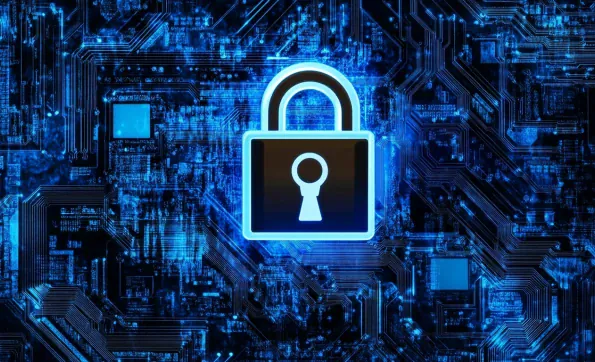The Cyberevolution event delved into critical regulatory challenges and their corresponding cybersecurity solutions. Topics of focus included significant European regulations such as DORA, NIS2, and the EU AI Act, alongside innovative cybersecurity measures like Security 3.0, Cyberfantastic, and the Identity Fabric. As cybersecurity climbs the priority ladder for C-level executives, driven by the need to safeguard businesses against cyber threats and meet growing regulatory requirements, understanding and addressing these challenges become crucial.
During a panel discussion, Martina Gruber from Clearstream Banking and Hinrich Völcker from Deutsche Börse underscored the necessity and implications of major regulations like the Digital Operational Resilience Act (DORA), NIS2 Directive, and the Cyber Resilience Act (CRA). With this backdrop, Cyberevolution brought to light the multifaceted nature of cybersecurity regulations and the forward-thinking strategies required to stay ahead.
Understanding Key European Regulations
DORA, effective January 17, 2025, establishes a rigorous ICT risk management framework for the financial sector, mandating financial entities and their critical third-party providers adhere to stringent technical standards. NIS2, an updated cybersecurity directive that took effect in 2023, broadens the legal measures to enhance cybersecurity across the EU. Meanwhile, CRA, effective from December 10, 2024, enforces mandatory cybersecurity standards for products with digital components, complementing NIS2 and fortifying the EU’s broader cybersecurity strategy within an interconnected digital ecosystem.
Martina Gruber highlighted that while Clearstream Banking is accustomed to strict regulations, DORA’s highly detailed requirements pose unique challenges. Unlike flexible guidelines, DORA demands specific, granular instructions, increasing complexity. Achieving 100% compliance across all security layers is difficult due to the ever-evolving technological landscape, with regulators often focusing minutely on individual controls, which can sometimes overlook the broader protective measures. This specificity and detail-driven approach require significant investment in technology and resources to navigate effectively.
The Impact of AI and the EU AI Act
Additionally, the burgeoning use of AI has attracted regulatory scrutiny. The EU’s AI Act, effective August 1, 2024, regulates AI development and deployment within the EU, categorizing AI systems by risk levels and imposing stricter requirements on high-risk applications, especially pertinent in sectors like banking and financial services. However, experts like Prof. Dr. Dennis-Kenji Kipker argue that the AI Act won’t suffice as a global standard; industries must take the initiative in strategic AI collaborations. This approach ensures that innovation isn’t stifled while maintaining rigorous ethical standards to prevent misuse and enhance societal trust in AI systems.
AI’s role in cybersecurity is notable, with its self-learning capabilities, anomaly detection, and evolving defense mechanisms enhancing threat detection and response. Martin Kuppinger of KuppingerCole emphasized the importance of strong AI governance and ethical guidelines. CISOs are advised to establish AI quality and ethical use methods, ensuring responsible implementation. Despite AI’s potential, Dr. Kipker warned about significant risks, advocating for state-of-the-art technical and organizational countermeasures. This dual focus on governance and innovation is essential to harness AI’s capabilities while mitigating inherent risks such as bias, security vulnerabilities, and ethical concerns.
Elevating Cybersecurity to a Strategic Priority
C-Suite executives now recognize cybersecurity as a strategic priority rather than merely essential liability coverage. Enhanced cybersecurity awareness at the board level has increased investments in security tools and response capabilities. Regular incident communication keeps the board informed and responsive. Martina Gruber stressed that cybersecurity is integral to a company’s culture and must be understood at every level, beginning with leadership. Beyond technological management, organizations must navigate notable operational, financial, and reputational risks. Effective cybersecurity requires boards to establish clear frameworks, allocate appropriate resources, and foster trust. Employees need to feel safe reporting risks without fear of negative repercussions.
Effective communication of cybersecurity concerns is crucial. Translating technical vulnerabilities into business-relevant insights necessitates clarity and balance. Despite existing gaps between technical and business teams, there’s a growing willingness to bridge these divides, fostering mutual understanding and aligning priorities. This integration ensures successful incorporation of cybersecurity into broader organizational strategies. By maintaining a transparent and proactive dialogue, companies can align cybersecurity measures with overall business objectives, making security an enabler rather than an inhibitor of innovation and growth.
Advanced Tools and Strategies for Maintaining Security
Maintaining security requires advanced tools and strategies. Zero Trust, an IT system design based on ‘never trust, always verify,’ is gaining traction, especially for securing distributed workforces and cloud environments. Key actions include readiness assessments, identity verification, and micro-segmentation. Identity Fabric, integrating diverse identity services into a cohesive system, is critical for achieving Zero Trust and compliance. This approach ensures that all users, both internal and external, are accurately authenticated and authorized before accessing company resources, thereby minimizing the risk of unauthorized access and data breaches.
Security 3.0 emerges as a proactive cybersecurity strategy, prioritizing resilience and prevention over detection and response. Drawing parallels with modern medicine’s focus on longevity, Security 3.0 emphasizes early threat detection and predictive analysis using big data, AI, and machine learning. This strategy advocates continuous improvement, adaptive responses, and collaboration among tech experts, businesses, and users. It also addresses crucial issues like user privacy, data protection, and ethical AI use. By shifting the focus from reactive to proactive measures, organizations can anticipate and mitigate potential threats before they materialize, ensuring a robust security posture.
Embracing Cyber-Fantastic and Future Preparations
Cyber-Fantastic, conceptualized by Matthias Muhlert, advocates transforming security threats into growth opportunities, transforming cybersecurity from a reactive state to a strategic advantage. This involves proactive, data-driven, and collaborative approaches to ensure long-term security in our increasingly digital world. By fostering a culture of adaptability and forward-thinking, companies can turn security challenges into opportunities for innovation and resilience.
Forward-looking cybersecurity strategies must align with business goals, focusing on resilience, efficiency, and harnessing emerging technologies. The advent of quantum computing challenges existing encryption methods, requiring the implementation of Quantum-Safe Encryption (QSE). Key steps include assessing cryptographic vulnerabilities, incrementally adopting QSE, and tracking new quantum-safe standards. Additionally, non-human identity management and decentralized identities are gaining traction, offering secure, user-focused solutions that enhance the security ecosystem. By embracing technological advancements and updating strategies accordingly, organizations can remain prepared for future cybersecurity challenges.
In conclusion, navigating the evolving cybersecurity landscape necessitates continuous engagement and readiness. Chief Information Security Officers (CISOs) are pivotal in fostering resilience and impacting regulatory developments. Artificial Intelligence (AI) presents significant opportunities but needs careful management to maximize its benefits. Collaboration and transparency remain crucial in strengthening defense systems. Integrating mental health and holistic approaches further boosts security measures. Events like Cyberevolution provide valuable insights into these multifaceted challenges and potential solutions, highlighting the essential need for ongoing dialogue and strategic alignment in cybersecurity.
Mirela Ciobanu, Lead Editor at The Paypers, continues to delve into the latest trends in digital assets, regtech, payment innovations, and fraud prevention. Her extensive knowledge in finance and fintech offers vital perspectives on cybersecurity trends and regulatory impacts, emphasizing the importance of online data privacy and protection.













